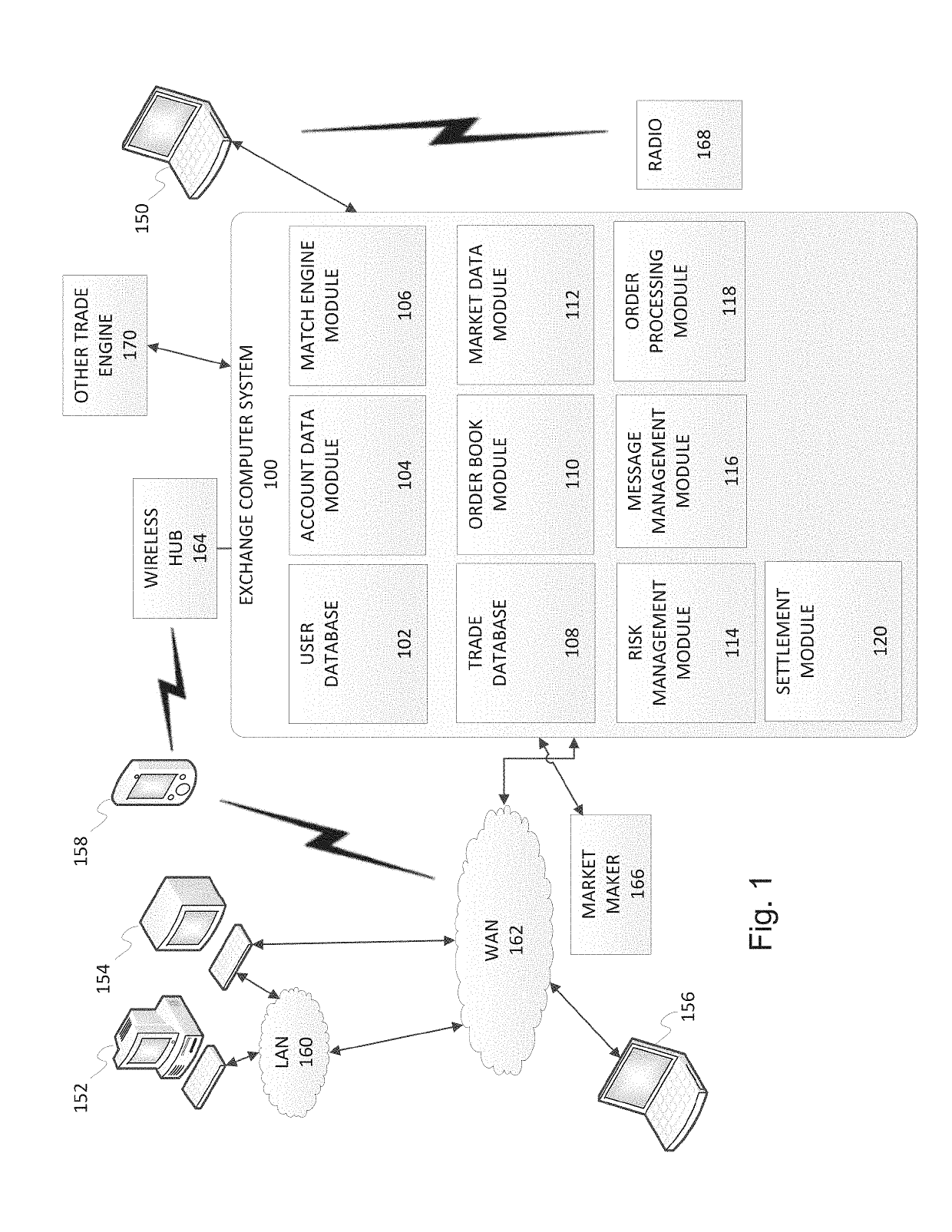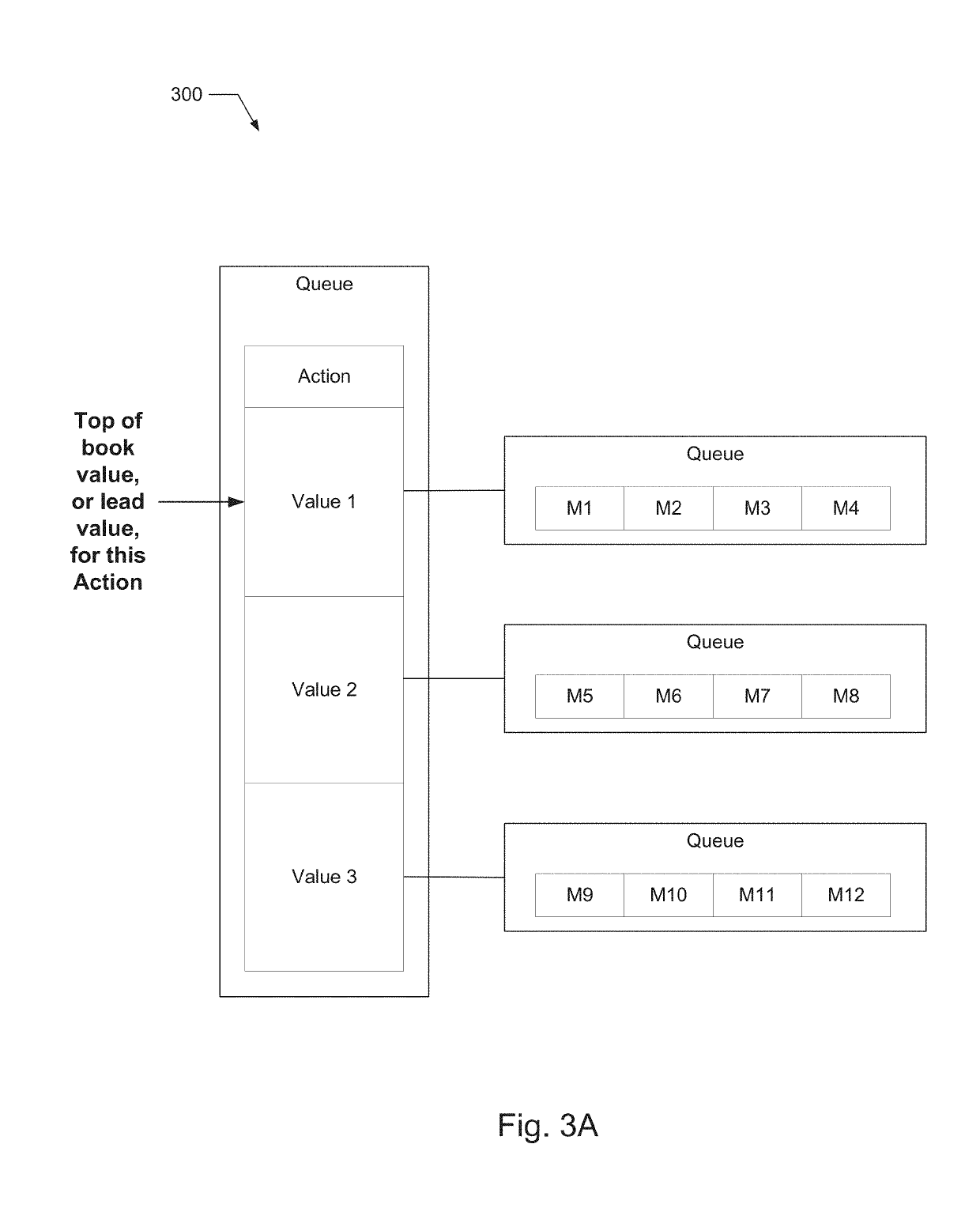Traditional
logging mechanisms generally
impact the performance of the underlying application being monitored.
In other words, monitoring an application, which is typically done to improve application performance, can have a detrimental effect on the performance of the application being monitored, i.e., a performance penalty.
The monitoring, which may adversely
impact the application being monitored, may include one or more of collecting data, recording the data, and / or reviewing the data.
The number of checkpoints from which data is recorded, or that trigger a monitoring
system to
record data as messages
traverse the checkpoints, in an application improves the
granularity or resolution about the performance of messages through that application, but also contribute to the performance penalty of the monitoring system, because each checkpoint may increase the amount of processing power / computing resources required by the monitoring system, and may also increase the storage requirements for the
data store where collected / logged data is recorded.
The performance of the monitoring threads / processes may adversely
impact the performance of the system because those processes / threads typically use the same resources, e.g. processor / CPU, memory, etc., as the system being monitored.
Reducing, e.g., disabling, checkpoints from an application, where a monitoring system records data based on the checkpoints, accordingly, reduces a performance penalty of the monitoring system.
However, such sampling can result in lower precision
metrics and less useful data.
However, messages, whether MBO or MBP, generated responsive to market impacting events which are caused by more than one order, such as a trade, may require the transmission of a significant amount of data to convey the requisite information to the market participants.
In addition, it may be appreciated that
electronic trading systems further impose additional expectations and demands by market participants as to
transaction processing speed, latency, capacity and
response time, while creating additional complexities relating thereto.
In those markets, the failure of one participant can have a
ripple effect on the solvency of the other participants.
Conversely, CME's mark-to-the-market system does not allow losses to accumulate over time or allow a
market participant the opportunity to defer losses associated with market positions.
As an intermediary to
electronic trading transactions, the exchange bears a certain amount of risk in each transaction that takes place.
This may result in penalizing the trader who makes an errant trade, or whose underlying trading motivations have changed, and who cannot otherwise modify or cancel their order faster than other traders can submit trades there against.
Furthermore, while it may be beneficial to give priority to a trader who is first to place an order at a given price because that trader is, in effect, taking a risk, the longer that the trader's order rests, the less beneficial it may be.
However, a trader who took a risk by being first to place an order (a “market turning” order) at a price may end up having to share an incoming order with a much later submitted order.
This results in an escalation of quantities on the order book and exposes a trader to a risk that someone may trade against one of these orders and subject the trader to a larger trade than they intended.
In the typical case, once an incoming order is allocated against these large resting orders, the traders subsequently cancel the remaining resting quantity which may frustrate other traders.
However, identifying implied opportunities may be computationally intensive.
The creation of implied orders increases the number of tradable items, which has the potential of attracting additional traders.
In some cases, the outright market for the deferred month or other constituent contract may not be sufficiently active to provide market data (e.g., bid-offer data) and / or trade data.
If any one of the queues or components of the
transaction processing system experiences a
delay, that creates a backlog for the structures preceding the delayed structure.
For example, if the match or transaction component is undergoing a high processing volume, and if the pre-match or pre-transaction
queue is full of messages waiting to enter the match or transaction component, the conversion component may not be able to add any more messages to the pre-match or pre-transaction
queue.
It should be appreciated that it may not be feasible or desirable to analyze the tracer
entry data stored in the log file until a later time, e.g., when the system is no longer accepting messages.
For example, if the monitoring system is implemented in an exchange computing system, the logged data may not be reviewed for performance analysis until the end of the trading day, after the exchange computing system stops accepting new messages.
Thus, while the
data store is recording information about the plurality of messages, it may not be efficient for an analysis tool to read the recorded data, for performance analysis of messages within the code.
Thus, disabling a checkpoint reduces an amount of data stored in the
data store.
Additionally, the illustrations are merely representational and may not be drawn to scale.
 Login to View More
Login to View More  Login to View More
Login to View More 


